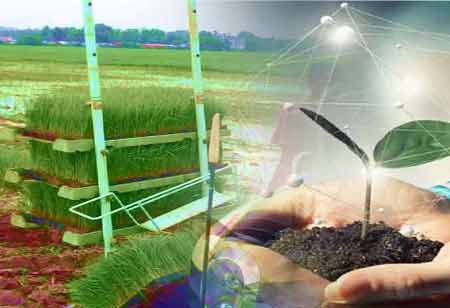Thank you for Subscribing to Agri Business Review Weekly Brief
Trends Reshaping Agriculture Technology
Accelerated growth in the global population has critically led to urbanisation, instigating an increased demand for food.

By
Agri Business Review | Monday, March 13, 2023
Stay ahead of the industry with exclusive feature stories on the top companies, expert insights and the latest news delivered straight to your inbox. Subscribe today.
Favouring an induced market growth of the agricultural sector often encompasses critical technology-driven trends like product category expansion, increased involvement of universities, and a critical rise in automated vertical farms.
FREMONT, CA: Accelerated growth in the global population has critically led to urbanisation, instigating an increased demand for food. As a result, the agriculture sector is in urge to deploy technology and innovation, meeting potential demands and offering sustainability in the arena. The smart agriculture technology market is soaring on an increased scale and is anticipated to rise furthermore in future periods, valuing up to USD 43.37 billion. Investments in the sector have been surging accordingly in recent years, enabling farmers with time-efficient resources and expansion over growing plants indoors via breakthrough research.
Indoor farming, or controlled environment agriculture (CEA), is a highly advanced and intensive form of hydroponically-based agriculture that favours plant growth in a controlled environment for the critical optimisation of horticulture-related procedures. Deploying this very approach enables the production of herbs, lettuces, microgreens, tomatoes, berries, and flowers, mimicking ideal conditions to grow regional plants in varied regions.
For instance, an arena aiming to grow Palisade peaches in cold weather may adapt to indoor farming, mimicking sunny summer days and cool nights. This, in turn, yields profitable results in the agricultural space, favouring freshness and reducing transport time while increasing the number and types of crops cultivated. Wherein, supply chain issues, in addition to peaking costs of goods and services, are signalling an expansion in the types of products that the CEA environment could nurture.
The palm oil export ban imposed in recent times has had an induced impact on the already-strained global cooking oil supply, cutting off the potential alternative for buyers. As a result, the increased intervention of agriculture professionals has emerged as a mere demand in analysing and determining the capabilities of varied plants via indoor farming methods.
Alongside this, colleges and universities are imprinting their footprints in the agriculture sector, undertaking integrated resources in agricultural research, and building essential hubs in the domain. These established centres will likely focus on the resilience and sustainability of crops during climatic changes while maximising water and energy efficiencies. This, in turn, expands seamless access to nutritious food.
Automating vertical farms has emerged as a formidable approach in recent times, as technology interventions like artificial intelligence (AI) deliver consistent plant results with predictable yields, inconsiderate human error issues and labour costs often incurred with traditional farming patterns. However, every innovation comes with its own set of traits, where potential challenges and additional needs like high upfront equipment costs and training workers over technology usage ought to be taken into critical consideration.





